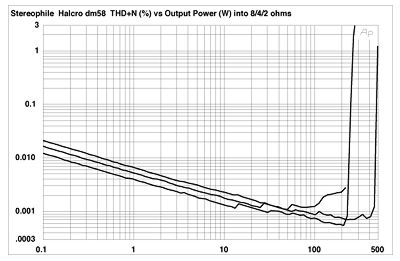a.wayne
Well-known member
- Thread Author
- #21
so are you saying the efficiency of the Wilson XLF is the problem in the equation between the Boulder 2150 and the darTZeel 458's?
if so, what about the Wilson Alexandra X-2 or X-2 mK2's (which are only slightly less efficient)?
hard to imagine the most popular 'mega speakers' would not work with a Boulder? I'm sure it's a (thee) target speaker for their products.
or is Fremer telling it right; that is just the way the Boulder sounds (to him)?
why would Boulder have Fremer review the amps if those speakers were a bad match?
Not saying it was a bad match , MF reported what he heard , what im attempting to say is there is no best, best is the amp best suited for the load presented , i can see other mega amps giving the boulder a run at 8 ohm , but being left behind on a 2 ohm Load vs the Boulder , due to its massive reserve and low Thd into low z.
Please be aware all the other amps indiscussion increases in distortion at lower Z drive ...
What i would also like to reiterate , MF system is optimised around the darts, you know as well as i Mike , this gives a big advantage to the resident amp ...
Regards

